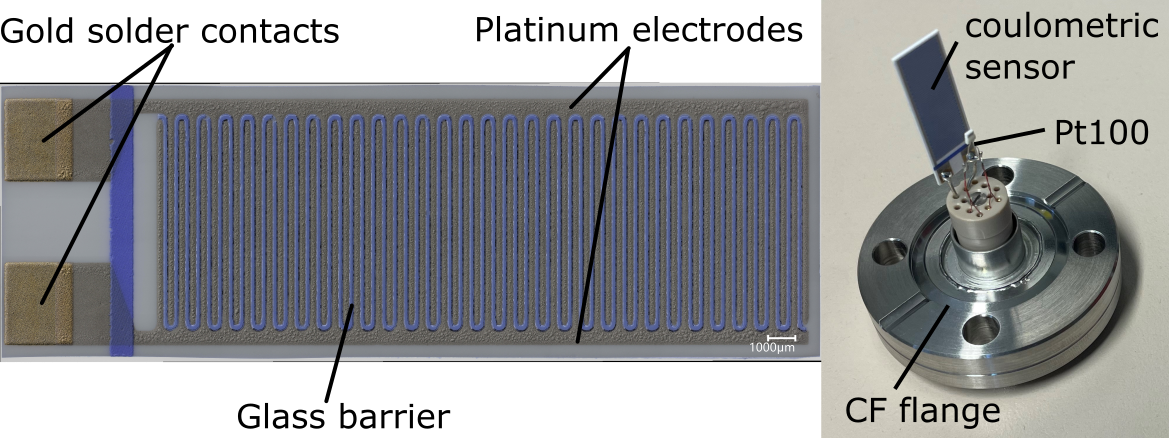A trace humidity sensor for measurement of Martian atmospheric humidity
- Institute for Planetary Research, DLR, Rutherfordstraße 2, 12489 Berlin, Germany (stephen.garland@dlr.de)
Building a full picture of the atmospheric humidity at the Martian surface is crucial for understanding the Martian climate and its implications for the search for life on the red planet. Current humidity sensors on Mars measure the relative humidity (r.h.) with a typical accuracy of a few %r.h [1,2]. This is generally sufficient for determining the volume mixing ratio of water in the atmosphere when the temperature is low enough, however such sensors can run into difficulty when the temperature is higher and the r.h. drops below the sensor measuring threshold, for example during the day or in drier areas. It would therefore be advantageous to deploy a sensor on Mars which is capable of measuring trace levels of water vapour to fill in the gaps where relative humidity sensors reach their limit. A sensor has been developed at the Planetary Analogs Simulation Laboratory at the DLR in Berlin which could provide a compact solution to this problem.
The sensor is based on a coulometric principle and has exhibited excellent accuracy at low humidity levels (range 0.3 to 300ppmV) [3]. It consists of two interlocking comb shaped platinum electrodes printed onto an aluminium oxide substrate using thick film printing technology [4]. The electrodes are spatially separated and an additional glass barrier is deposited between the electrodes to avoid the possibility of a short circuit. The sensor is coated with a patented gel containing P2O5 [5], which is strongly hydrophilic and absorbs water from the surrounding atmosphere. Applying a voltage between the electrodes results in an electrolysis reaction with a current proportional to the water vapour content in the surrounding atmosphere. The reaction can be summarised as:
P2O5 + H2O → 2HPO3
2HPO3 → H2 + 1/2 O2 + P2O5
The sensor layout can be seen in figure 1, as well as the sensor connected to the electrical feedthrough of a CF-25 vacuum flange.

Figure 1. Left: Coulometric sensor developed at the DLR. Right: Coulometric sensor built into a measurement cell CF-25 flange with a Pt100 temperature sensor.
Tests are currently underway in CO2 atmospheres using the sensor calibration facility at PASLAB [6]. The facility has the capability of generating atmospheres of air and CO2 (among other gases), with humidities in a stepless way down to the order of 0.5 ppmV and temperatures down to -70°C. Measurement cells are available for atmospheric pressure and for vacuum measurements.
This contribution will provide details of the sensor design and functioning principle and show the results of tests under CO2 at a range of humidities, temperatures and pressures, providing a solid understanding of the behavior of the sensor in Martian atmospheric conditions.
Acknowledgments: Funding for the results presented in this contribution has been provided through the WIPANO program from the BMWi Deutschland (NORFEUGA-100477081).
References: [1] Hieta, M. et al. (2023) EGUsphere, 1823. [2] Hieta, M. et al. (2022) Planetary and Space Science, 223, 105590. [3] Tiebe, C. et al. (2018) tm - Technisches Messen, vol. 85, no. 12, pp. 746-753 [4] Lorek A. et al. (2010) Proceedings “Aquametry 2010”, Weimar, 289–296. [5] A. Koncz et al., Coulometrischer Feuchtesensor und entsprechendes Verfahren Patent EP2264445 B1 (2017). [6] Lorek et al. (2024) 55th LPSC, 3040.
How to cite: Garland, S., Lorek, A., and Helbert, J.: A trace humidity sensor for measurement of Martian atmospheric humidity, Europlanet Science Congress 2024, Berlin, Germany, 8–13 Sep 2024, EPSC2024-416, https://doi.org/10.5194/epsc2024-416, 2024.